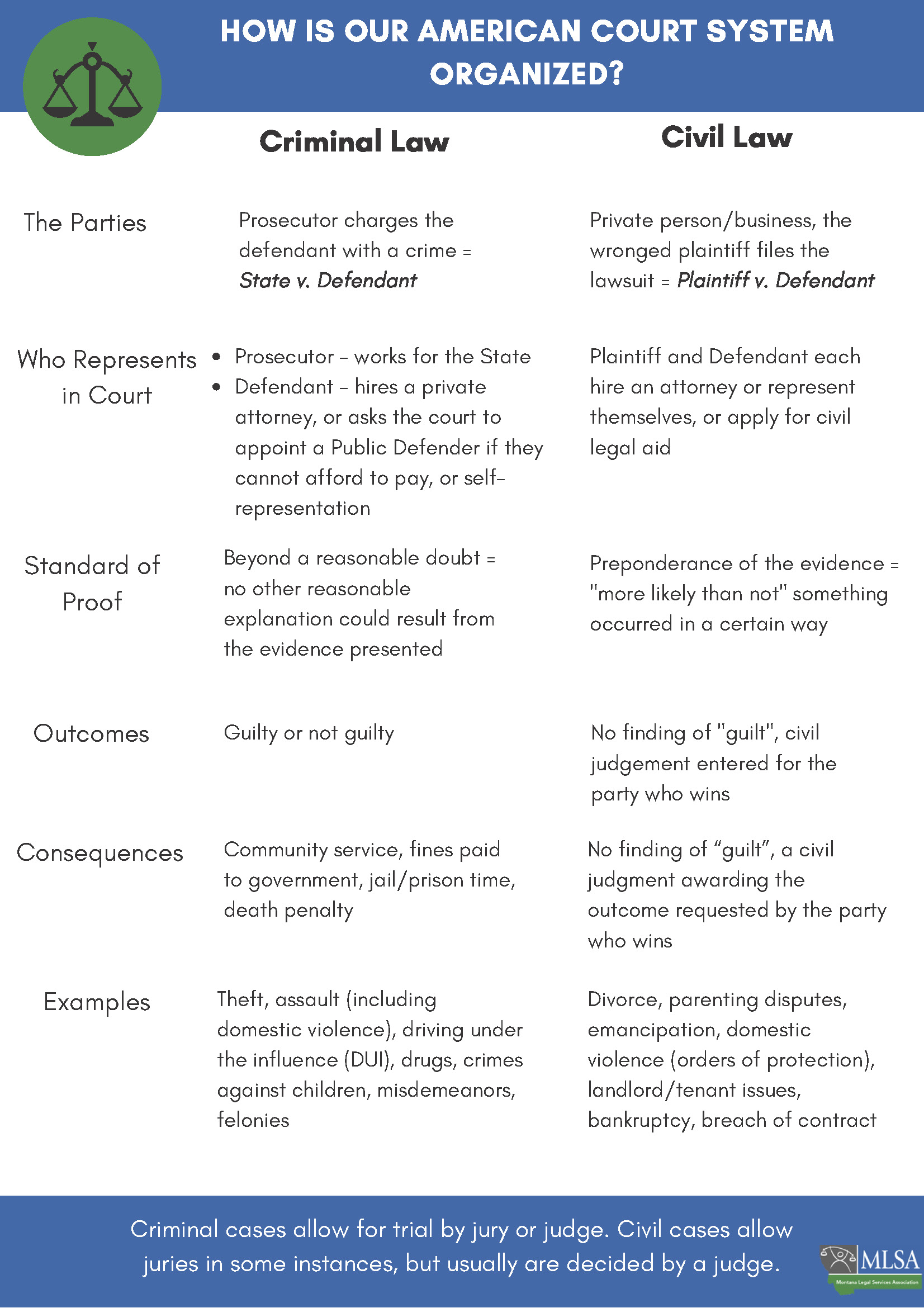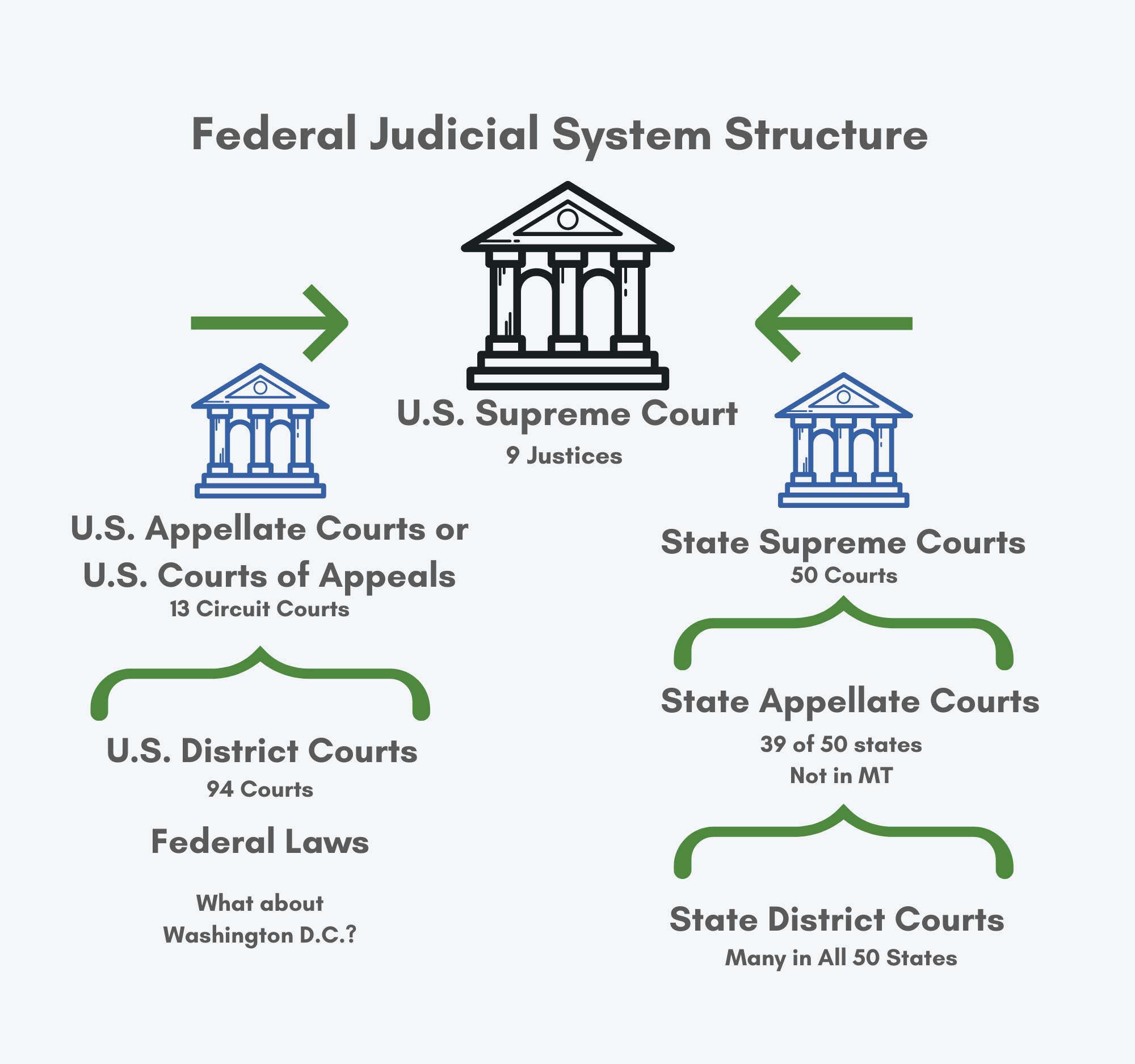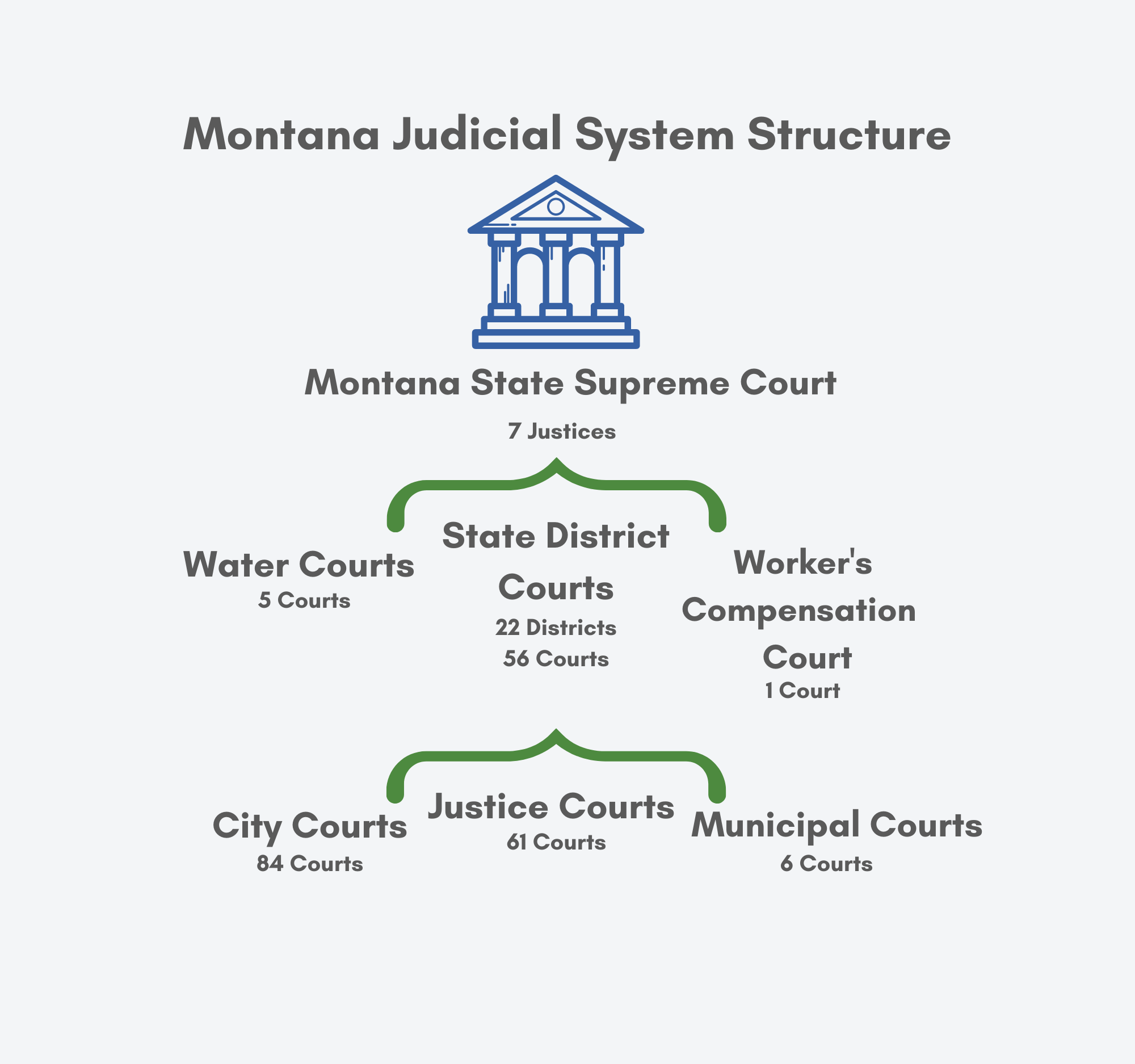Title
Basics of Montana's Legal System and Courts
Description
Learn the basics about criminal vs. civil legal issues, your rights, the Montana court system and jurisdiction. This article also links to a Montana Judicial System lesson plan for high school students.
Resource Information
ID
Find more resources using our interactive Legal Guide.
Last Updated
Last review and update:




